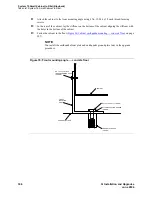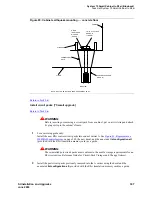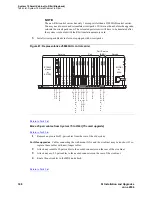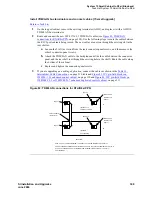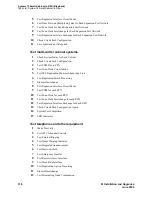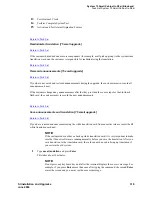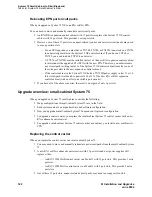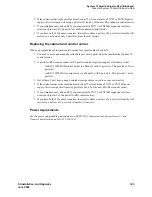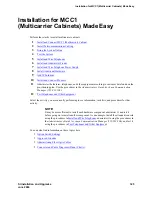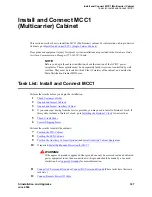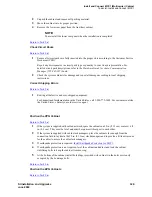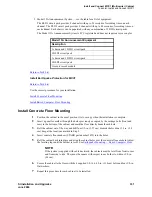
System 75 Small-Cabinet to R8si (Blowback)
Task List: System 75 Small Cabinet to R8si
316
SI Installation and Upgrades
June 2004
1
Get the DOSS order number of the upgrade from the project manager and ask the regional
Customer Software Administration to administer customer options. See the
Avaya Support Web
page
for telephone numbers.
2
Log in to the switch and respond to the Access Security Gateway (ASG) challenge.
3
For duplicated systems, verify that the switches are in auto: Type
status system 1
and press
Enter.
Verify that conditions are normal (this can take as long as 5 to 10 minutes). If the system refuses
to go onto a normal condition, refer to the maintenance procedures; if that fails, escalate the
problem.
4
If it is necessary to change the offer, type
change system-parameters offer-options
and press
Enter.
5
If changing offers and the
Activate Offer
field is n, set it to y and press Tab. A warning
message lets you know whether you need to save translations and reboot to make the change
permanent.
6
Press Enter to effect the changes or Cancel if there were no changes.
7
Type
change system-parameters customer-options
and press Enter to set the customer
options that were purchased. Change the
G3 version:
field to V9.
Use these forms to verify the customer options are set correctly.
8
If the customer was using Supplementary Services Protocol b or d on an ISDN-PRI trunk group
before the upgrade, set the
Basic Call Setup
field on the QSIG Optional Features page to
y
.
9
For R8 to R9 only and customers having IP softphones, go to the Maximum IP Registrations by
Product ID screen (last screen) and verify that the number listed in the
IP_Soft
field did not
default to 1. If it did, get the number from field technician and type it in.
10
Press Enter to effect the changes.
11
Call the INADS database administrator at the TSC to verify that the system is part of the existing
INADS database.
12
Verify that INADS can dial into the system and that the system can dial out to INADS.
13
Log off and log back in as craft.
Reference
The INADS database administrator enables alarm origination and customer options as part of system
registration.
Return to Task List
Verify the upgrade [75 small upgrade]
Return to Task List
1
Execute
status system 1
and verify that the system is in a normal state.
2
Type
display alarms
and press Enter.
If the system is not alarm-free, take the needed corrective actions.
3
Type
list configuration software-version
(simplex) or
list configuration software-version
long
(duplex) and press Enter. Check the
Memory Resident
field to verify that it shows the correct
software load.





